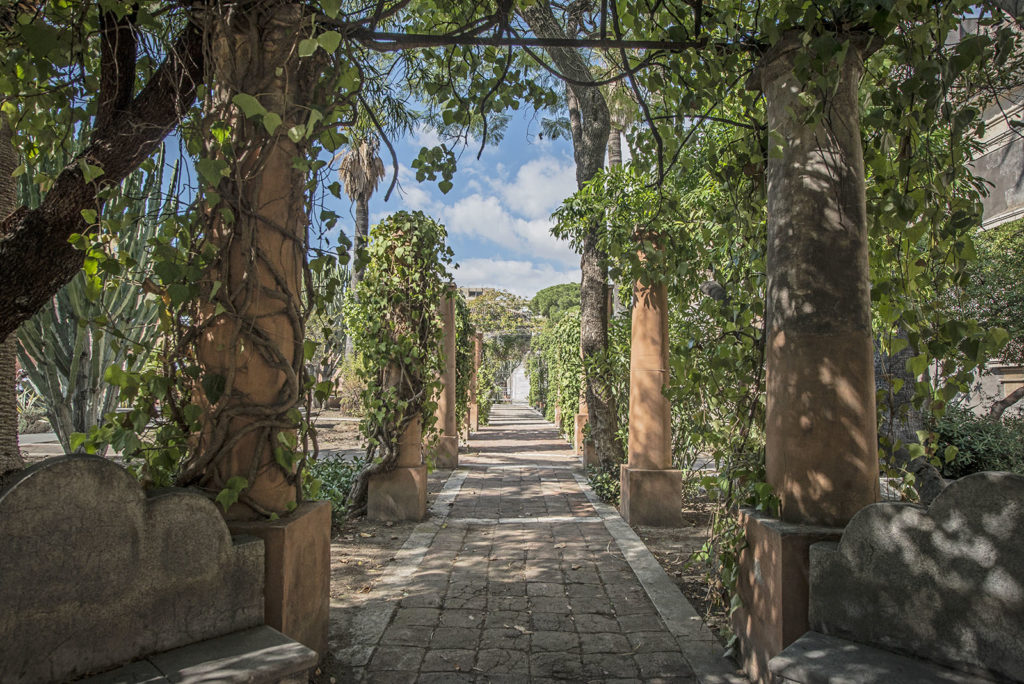One of the most fascinating places in the monastic complex is the Giardino dei Novizi (Garden of Novices).
A place that perhaps more than any other inside the complex has suffered great damage and changes, but was also excellently restored by the architect
Giancarlo De Carlo
, who worked on restoring the entire monastery just over thirty years ago.
The Garden of Novices, as its name suggests, was reserved for those who were undertaking their spiritual journey to become part of the religious order. They were required to observe and learn the Benedictine way of life. The garden was created on top of the lava bed of 1669 in the guise of a hanging garden, but was destroyed to house a gymnasium over the course of the 20th century.
The gymnasium was demolished during the years of restoration of the complex. The architect De Carlo restored the area by adding a spiral staircase with modern shapes and a fountain, turning it into a green space open to all.
